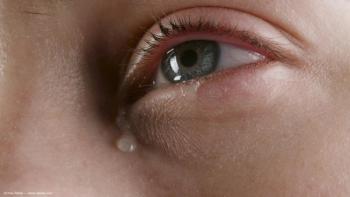
Man suffers bee sting that leaves stinger lodged in eye
Ophthalmologists were able to remove the stinger after identifying its location during a slit lamp examination.
Getting stung by a bee can be a painful experience, and for some people who are allergic to the venom of the sting, it can lead to anaphylactic shock, rhabdomyolysis, or renal failure. It can be even worse if the person is stung in the eye.
A 55-year-old man presented at an ophthalmology clinic after suffering a sting to the right eye. The case was published in the New England Journal of Medicine.
Immediately after being stung, the man went to a local emergency department where the stinger was removed, but vision issues persisted.
According to the paper, written by Talia N. Shoshany, MD, and Zeba A. Syed, MD, both with the Wills Eye Hospital in Philadelphia, Pennsylvania, the man came to the clinic after experiencing worsening vision and pain in his right eye after having been stung by a bee in that eye 2 days earlier.1
A slit lamp examination was performed to determine the location of the remnants of the stinger.
During an examination, it was noted that vision in the patient’s right eye was limited to counting fingers. The intraocular pressure in the right eye was 16 mm Hg (reference range, 12 to 21). The slit-lamp examination with fluorescein dye was performed, showing conjunctival injection, inferior corneal edema, and an infiltrate at the nasal limbus with a piece of retained stinger.1
The authors noted that a hyphema, which was attributed to iris trauma from the buried stinger and bleeding iris vessels, was detected. Jeweler’s forceps were used to remove the remnants of the stinger.
“Ocular bee stings warrant referral to an ophthalmologist owing to the severe inflammation that may result from the injury, as well as the possibility of a retained stinger in the eye,” the authors concluded.
The patient was prescribed topical antibacterial and prednisolone eye drops were prescribed. At 5 months of follow-up, the visual acuity in the right eye had improved to 20/25.
Reference:
Talia N. Shoshany, MD, and Zeba A. Syed, MD. Ocular Bee Sting. N Engl J Med. Published June 22, 2024. Accessed July 8, 2024. DOI: 10.1056/NEJMicm2400652
Newsletter
Don’t miss out—get Ophthalmology Times updates on the latest clinical advancements and expert interviews, straight to your inbox.













































